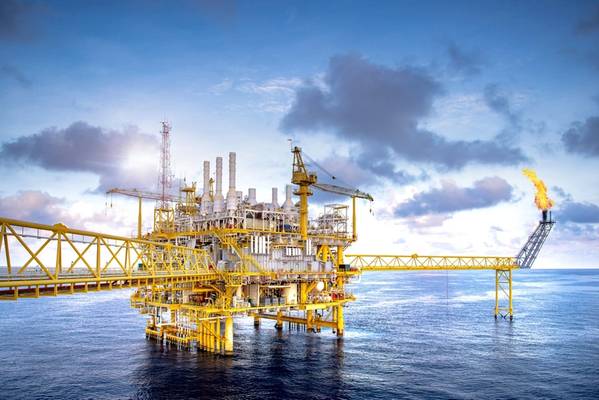
North Sea oil and gas operators could invest up to $3.7 billion in 14 major projects capable of cutting up to 32 million tonnes of lifetime CO2e emissions from their production activities, according to North Sea Transition Authority (NSTA).
The projects – highlighted NSTA’s annual performance review of the UK’s top 20 operators – involve using low-carbon power on platforms, installing technologies designed to eliminate routine flaring and venting, and hydrogen.
They could potentially go live between 2024 and 2030 on new projects, making a significant contribution to achieving the sector’s emissions reduction targets.
However, final investment decisions have been secured for fewer than half of these projects, to date, highlighting that there is still work to do. The NSTA, the industry regulator, expects operators to press ahead with all of them and come up with more emissions reduction schemes in the coming years.
At its annual Tier Zero meeting, the NSTA uses data and benchmarking insights to show operators how they compare with each other to showcase good practice and drive improvements. It is also a platform for the regulator to set out its near-term priorities, which this year include energy production, emissions reduction and well decommissioning.
Oil and gas meet around three quarters of the UK’s energy needs and, even as demand declines, the UK is expected to remain a net importer out to 2050.
UKCS production fell by 11% last year, a decline exacerbated by unplanned outages, while production efficiency, a key metric which indicates how well companies are using their assets, was 77%, down one percentage point. Operators were reminded of the longstanding 80% target and urged to redouble efforts to tackle root causes of the unreliability of some assets.
The NSTA has also promoted well interventions as a cost-effective way to boost production but, disappointingly, the intervention count fell from 450 to 402 in 2023. The regulator is working closely with leading operators to get interventions moving back in the right direction.
Industry Cut Production Emissions by 23% from 2018 to 2022
Since the start of 2023, the NSTA has consented to eight oil and gas developments targeting 430 million barrels and requiring close to $5.5 billion of investment to improve the UK’s energy position, generate tax revenues and create supply chain jobs.
In addition, operators are working on proposals for 14 oil and gas projects capable of yielding more than 750 million barrels. All proposals must go through an effective net zero assessment to make sure they are compatible with net zero targets.
According to NSTA, industry reduced its production emissions by 23% between 2018 and 2022, and preliminary data suggests a further drop in 2023. However, there is a risk that the sector will not deliver on its commitments to cut emissions by 50% by 2030 and 90% by 2040, on the way to net zero by 2050, without further abatement measures.
The NSTA published the OGA Plan, focused on emissions reductions, in March 2024 to build on those targets and put industry on pathways to net zero. It makes clear that for production to continue, it must get progressively cleaner, and calls for concerted action, including on power generation, and an end to routine venting and flaring by 2030.
NSTA chiefs also used the Tier Zero to call for licensees to meet their commitments on well decommissioning. As the basin continues to mature, more wells will permanently stop producing and require plugging and abandonment. Companies must clean up after themselves to retain support for their operations.
Despite providing clear guidance on well decommissioning, compliance has been mixed in recent years, with licensees continuing to request deferrals. The NSTA wrote to licensees in November 2023 to warn that those failing to comply will be held to account.
The NSTA is also spearheading a project to identify which UKCS wells will be ready for decommissioning between 2026 to 2030 and assess the supply chain capacity required to undertake the work in a timely and cost-effective manner.
These insights will guide engagements with industry to promote collaboration and, where appropriate, facilitate well decommissioning campaigns involving multiple operators and fields – an approach which can save time and money while also reducing emissions.